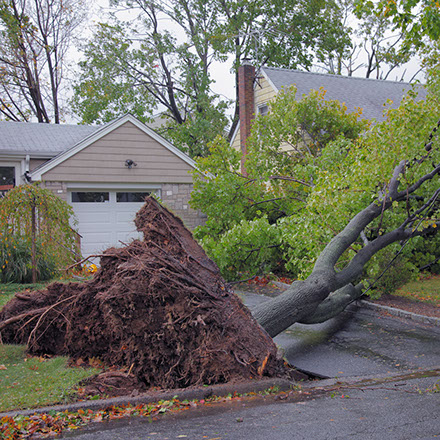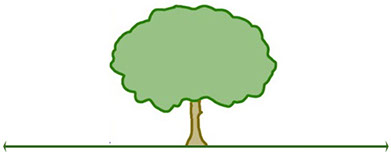The science of preserving nature since 1964
Storm Damage Prevention
With storm season fast approaching, it is prudent to have at least an annual inspection of your trees to eliminate hazards and reduce the chances of failure. The most simple and obvious way is to keep your trees strong and healthy long before a storm arrives. This includes providing them with enough water, fertilizer as well as regular and corrective pruning from the time the tree is young. Don’t wait for your trees to go into decline before you start taking care of them.
Note: If you have any immediate concerns about your trees, contact your local Almstead branch office to schedule an appointment with a TRA (Tree Risk Assessment) certified arborist. TRA helps identify potential issues with trees in order to best evaluate associated risk. Once properly assessed, an arborist can suggest decisive actions to best mitigate or eliminate the risk with the owner or manager of the property.

Here are some general ways to keep your trees healthy and avoid storm damage:
Prune Your Trees as Needed
Besides removing dead and weak branches, pruning also enhances the proper structure and growth of your trees. It can also improve the shape and form of your tree making it more resistant to weather damage.
Protect the Tree’s Root System
Even though you can’t see them because they are underground, roots are critical to the overall strength and stability of a tree. They can be considered as a tree’s anchor, keeping it stable even in strong winds and extreme weather. However, roots also need pruning when they encircle the trunk (known as girdling roots). A Root Collar Excavation (RCX) may be needed to correct the issue.
 Stay 1.5x the distance out from the ends of tree branches.Avoid Construction and Excavation Near the Tree
Stay 1.5x the distance out from the ends of tree branches.Avoid Construction and Excavation Near the Tree
Bark and limbs are often damaged by construction equipment, weakening a tree's defenses. Severing tree roots during construction is especially dangerous because it eliminates the tree's anchor to the ground. A weak tree is more prone to failure during a storm. As a general rule of thumb, stay 1.5 x the distance out from the ends of tree branches.
Add a Layer of Mulch
Putting a ring of mulch around a tree’s base can protect its root system and trunk flares from mechanical damage preserve the nutrients and water in the soil. It also prevents weed growth. However, be careful not to pile up mulch too high up the tree trunk because that can lead to girdling roots and basal rot.
Plant the Right Tree at the Right Place
A well-planned landscape will contain trees that grow well in the soil, moisture and sunlight conditions of the area. Care must also be taken to avoid collisions with power lines and buildings. There are also several tree species that can withstand storms better than others. Always speak to you arborist before planting a tree on your property. Arborists, more than anyone (in our opinion), know what the long-term maturity requirements are for trees and shrub species and cultivars. We typically see over-planting and the use of incorrect species for the area at hand.

LOCATIONS:
Lower Westchester County, NY and New York City
58 Beechwood Ave, New Rochelle, NY 10801
914-576-0193
Upper Westchester (North of I-287)
15 Broadway, Hawthorne, NY 10532
914-741-1510
Fairfield County, Connecticut
547 Hope Street, Stamford CT 06907
203-348-4111
Bergen & Passaic Counties, NJ
504 High Mountain Road, North Haledon, NJ 07508
973-636-6711
Contact us for a Free Consultation
